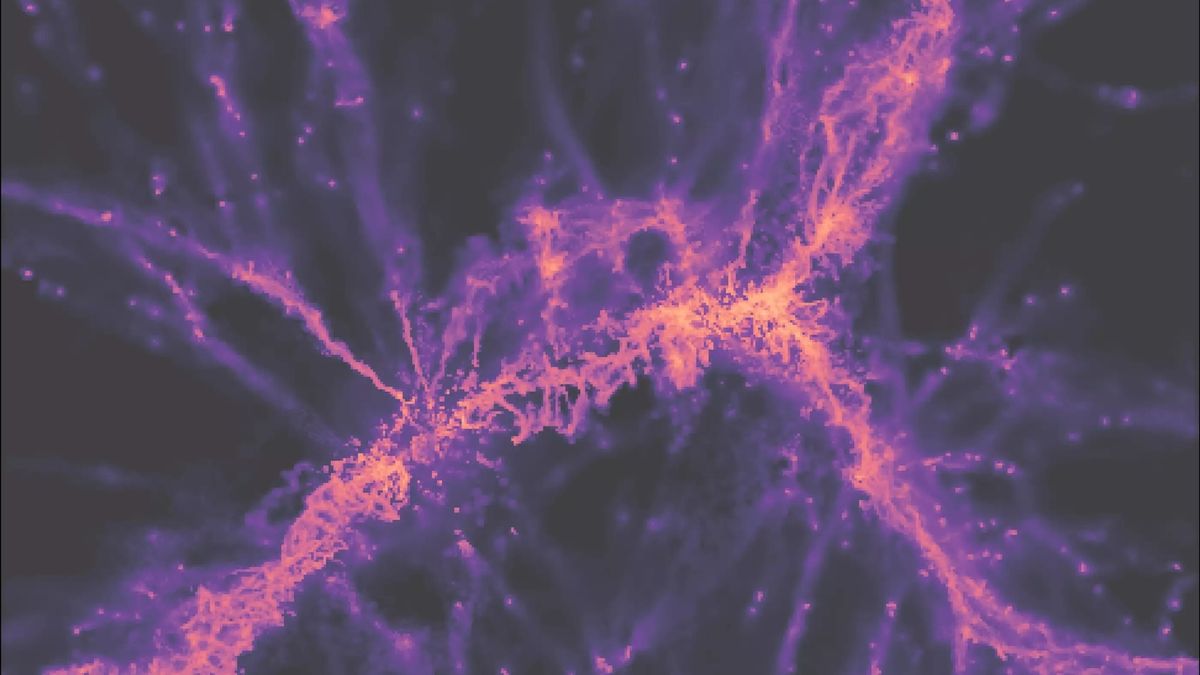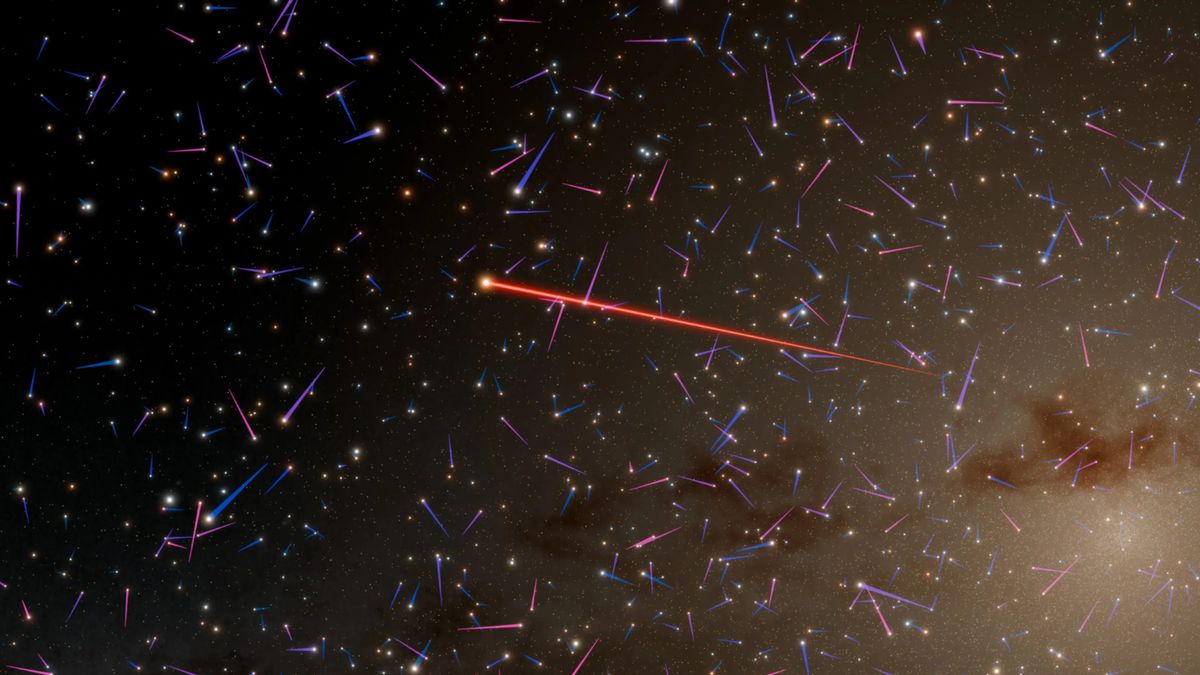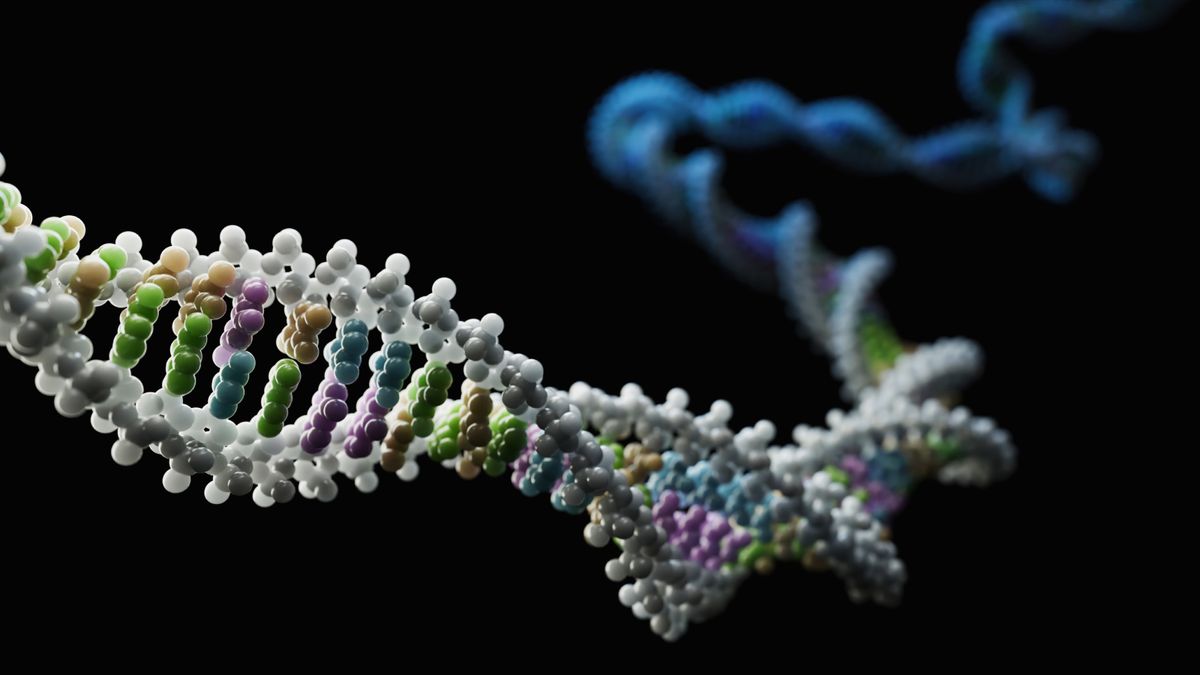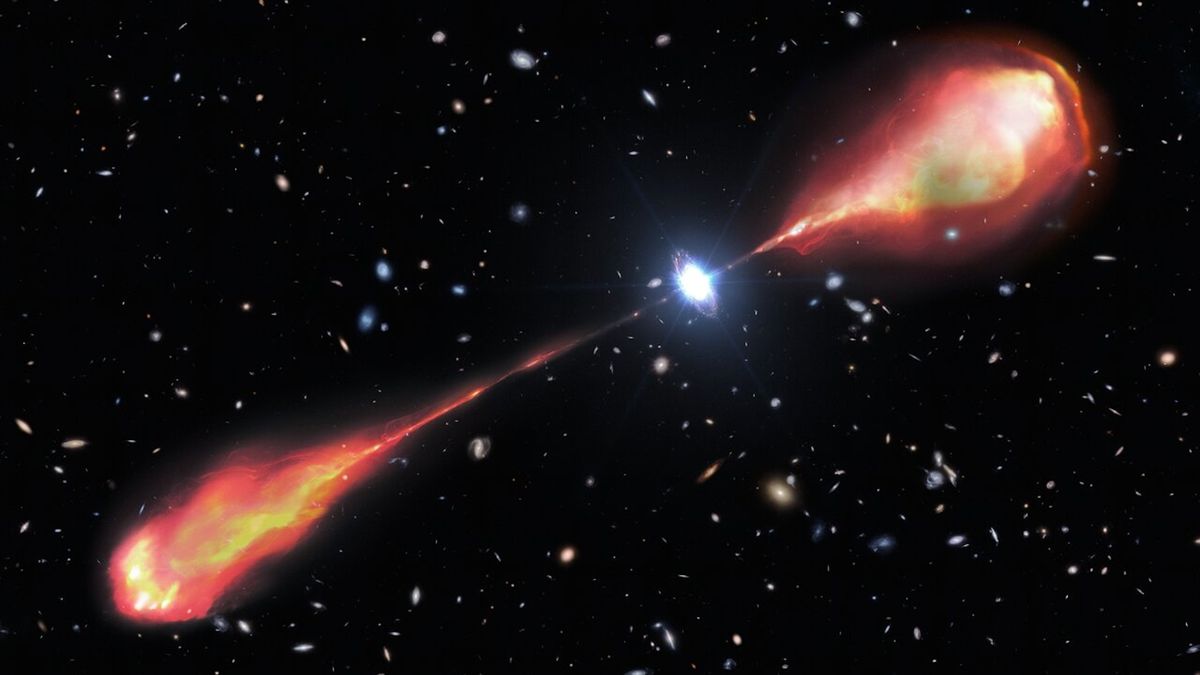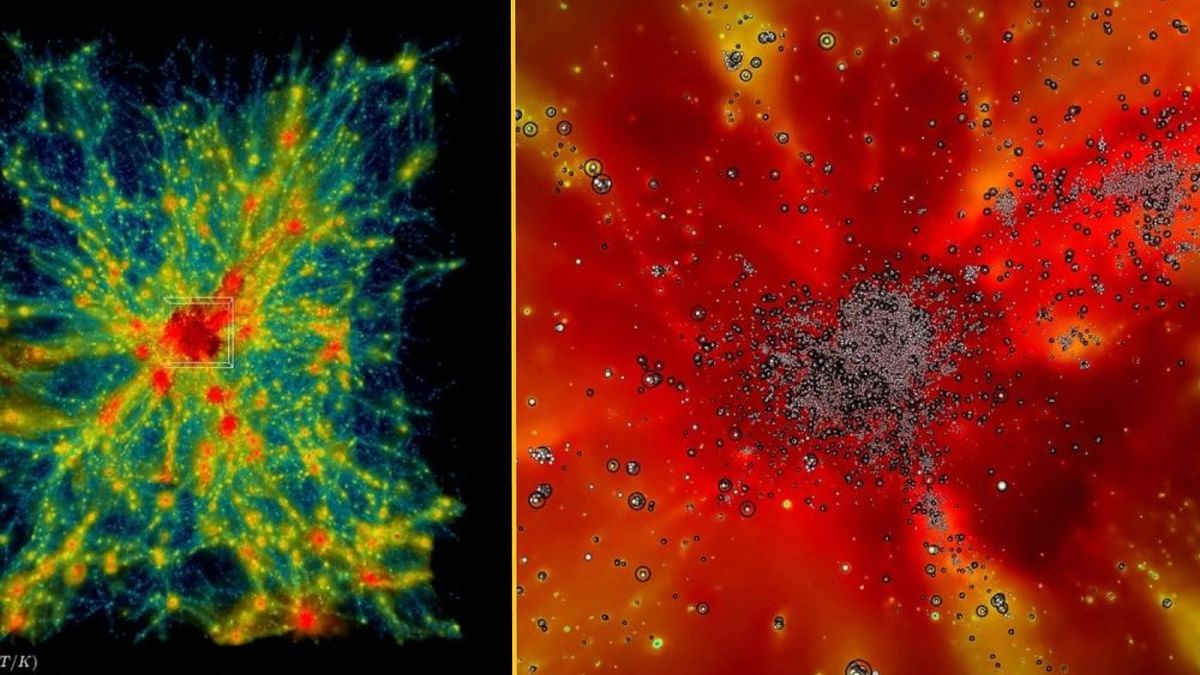Scientists may have spotted a tiny star, possibly with an alien world in tow, shooting through the Milky Way around 500 times faster than a speeding bullet. This would make this the fastest planetary system ever seen. However, there is still uncertainty about the true nature of the speeding object and its companion.
In 2011, researchers indirectly spotted a pair of mysterious objects in the Milky Way, via a phenomenon known as “microlensing” — a low-level form of gravitational lensing where light gets “bent” as it passes through space-time that is distorted by large objects. Although the team did not directly see or measure the pair, the gravitational anomalies revealed the larger object was around 2,300 times heavier than the smaller object. One of the leading theories to explain this was that the pair consisted of a small star being orbited by a sizable exoplanet located somewhere in the “galactic bulge” of stars near the Milky Way’s center.
In a new study, published Monday (Feb. 10) in The Astronomical Journal, a different group of researchers has identified a new star that could be the larger object from this mysterious pair. The star has a mass roughly one-fifth that of the sun and is located around 24,000 light-years from Earth in the galactic interior. Based on its location relative to the 2011 sighting, the researchers calculated that the star is traveling at least 1.2 million mph (1.9 million km/h).
No alien world was spotted during the new observation, which is unsurprising given that it can take years of constant monitoring to detect an exoplanet circling a star. However, based on the size of the larger object, the researchers could predict the mass of the potential exoplanet and its distance from its home star.
“We think this is a so-called super-Neptune world [roughly 30 times more massive than our planet] orbiting a low-mass star at a distance that would lie between the orbits of Venus and Earth if it were in our solar system,” study lead author Sean Terry, a postdoctoral researcher at the University of Maryland and NASA’s Goddard Space Flight Center, said in a statement. “If so, it will be the first planet ever found orbiting a hypervelocity star.” (Given the star’s small size, the planet would almost certainly be uninhabitable, the team added.)
Related: 32 alien planets that really exist
At this speed, the potential planetary system would be moving through the Milky Way roughly twice as fast as the solar system. However, it could be traveling even faster, because the new observations do not take into account its direction relative to our system, the researchers wrote.
If the stellar contender is traveling at more than 1.3 million mph (2.1 million km/h), it will have a sufficient escape velocity to one day leave the Milky Way and drag its planetary companion with it into intergalactic space, NASA representatives wrote in the statement.
However, the team is still unsure about the objects’ true sizes and speeds — or even what they really are.
Multiple uncertainties
Even if the larger object from 2011 is a star, there is no guarantee that it is the same star spotted in the new study, or that it is moving at the speed the researchers calculated, because they have not actually seen it move yet.
“To be certain the newly identified star is part of the system that caused the 2011 signal, we’d like to look again in another year and see if it moves the right amount and in the right direction to confirm it came from the point where we detected the signal,” study co-author David Bennett, a senior research scientist at the University of Maryland, College Park and NASA Goddard, said in the statement.
There is also an alternative explanation for the 2011 sighting: that the pair of objects is actually a giant rogue exoplanet being orbited by a massive exomoon. In this scenario, the duo would also be located much closer to Earth.
If future observations show the star does not move, “that would mean the rogue planet and exomoon model is favored,” study co-author Aparna Bhattacharya, a research scientist at the University of Maryland and NASA Goddard, said in the statement.
